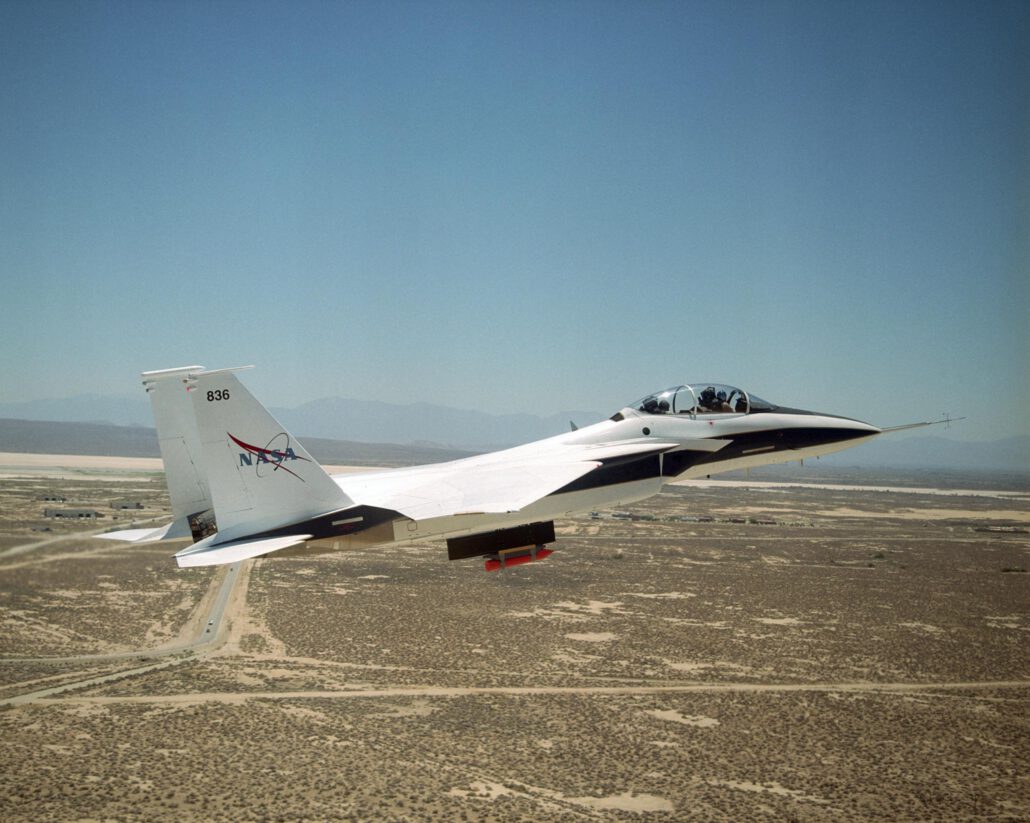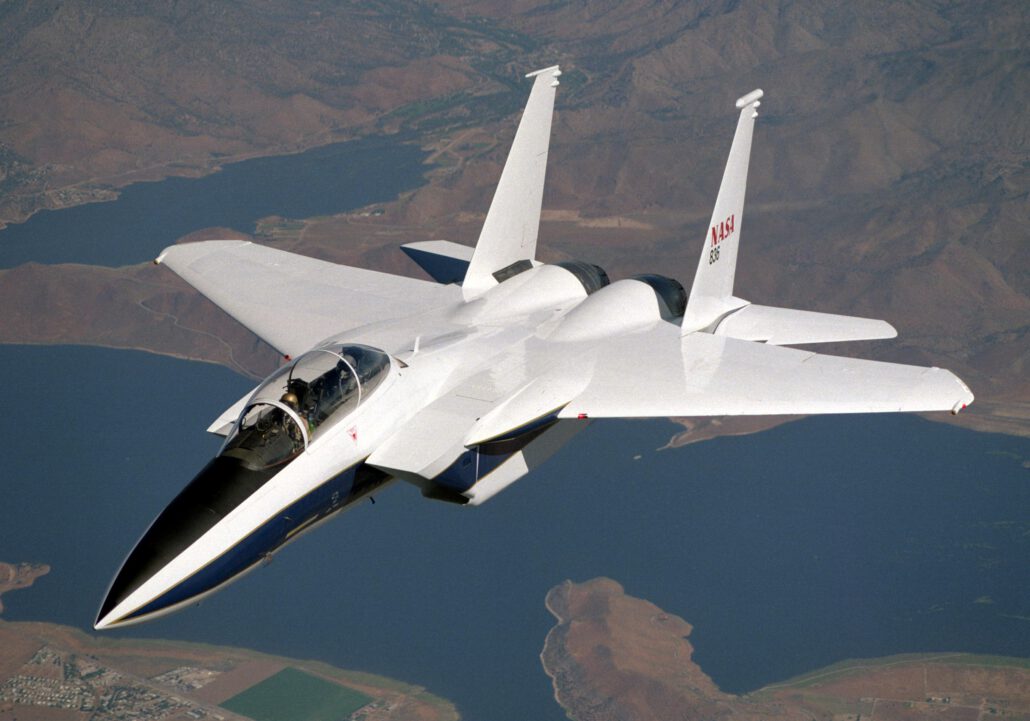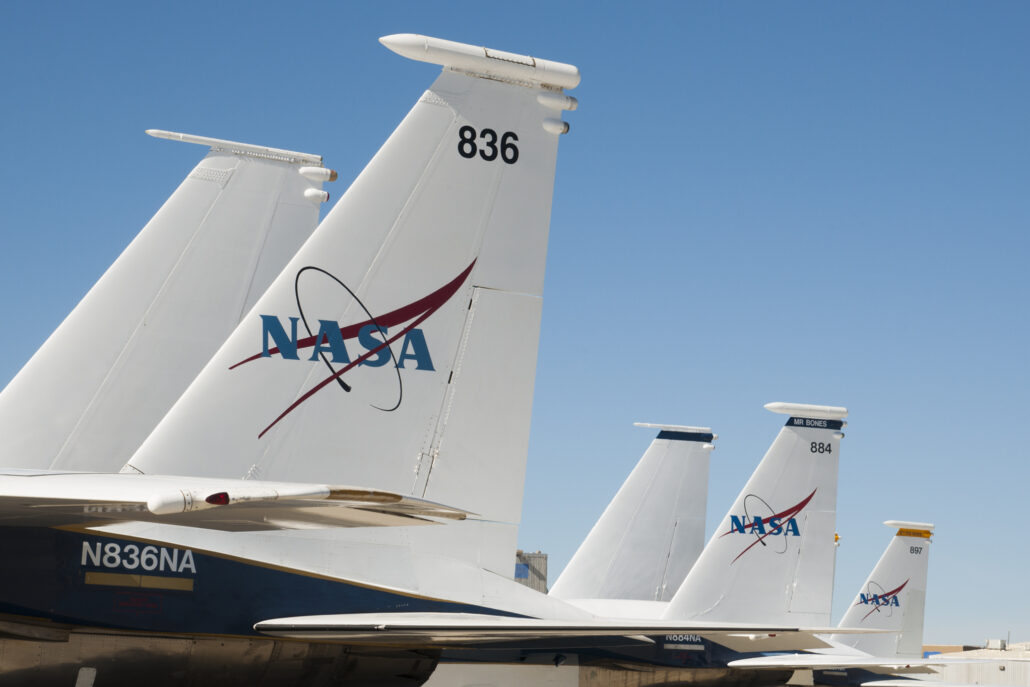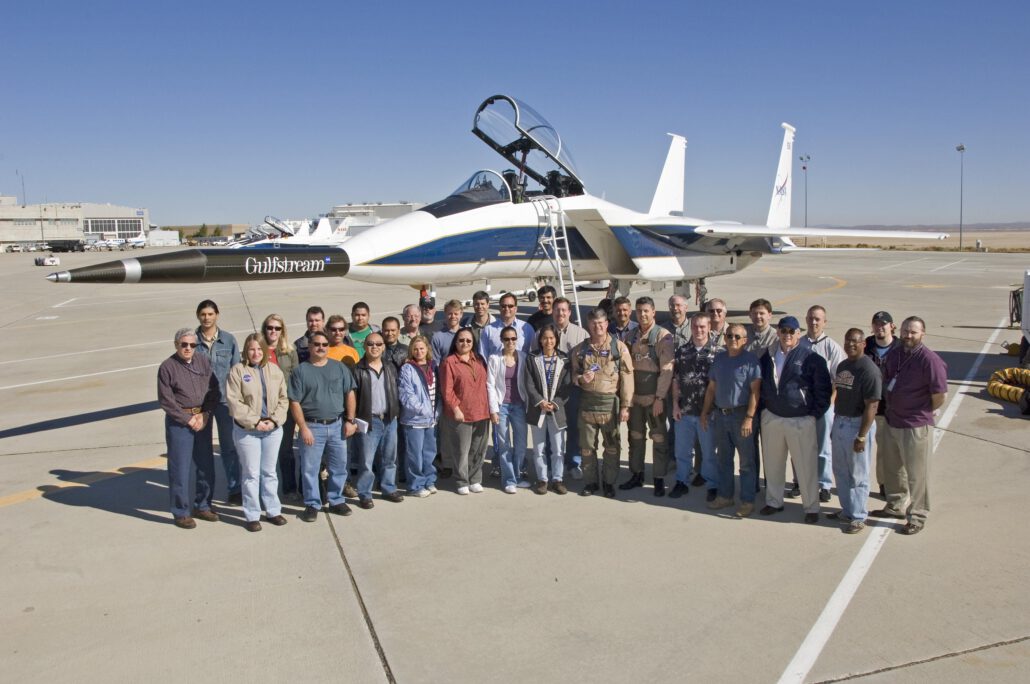NASA’s Armstrong Flight Research Center in Edwards, California, uses a modified F-15B aircraft as a test bed for a variety of flight research experiments. Coupled with either a flight test fixture or a Propulsion Flight Test Fixture mounted underneath the aircraft, the F-15B Research Test Bed aircraft provides a unique flight research capability.

Aircraft Description
Armstrong’s F-15B is a two-seat version of the F-15 tactical fighter aircraft built by McDonnell Douglas, now a division of The Boeing Company. The aircraft was obtained in 1993 from the Hawaii Air National Guard. In addition to flying research missions, Dryden’s F-15B also is used for crew training, pilot proficiency and safety chase support for other research aircraft.
Bearing NASA tail number 836, the F-15B is a 64 feet long and has a wingspan of just under 43 feet. It is powered by two Pratt and Whitney F100-PW-100 turbofan engines that can produce almost 24,000 pounds of thrust each in full afterburner. It is capable of dash speeds well in excess of Mach 2, more than twice the speed of sound, at altitudes of 40,000 to 60,000 feet, although speeds are limited to Mach 2 when a flight test fixture is mounted beneath the fuselage. The aircraft has a full-fuel takeoff weight of about 42,000 pounds and a landing weight of about 32,000 pounds. It has aerial refueling capability for extended-duration research missions.

A data acquisition system gives the F-15B a capability that makes it one of the most versatile research aircraft NASA flies. The data system includes a research airdata system for the aircraft itself, a Global Positioning System (GPS) navigation package, a nose boom that contains an airdata probe, a digital data recorder and telemetry antennas. In addition, an on-board video system monitored from the rear seat of the cockpit transmits high-speed airborne video and photography to researchers on the ground.
Flight Test Fixtures
The F-15B carries one of several flight test fixtures mounted underneath its fuselage to help conduct flight research experiments.
The Advanced Flight Test Fixture is built primarily of carbon/epoxy materials and is in two sections: an upper avionics pylon and a lower test article. The avionics pylon is a permanent structure housing avionics, research instrumentation and other support equipment. Individual experiments are mounted on the lower section for flight testing. When needed, a removable air data probe is installed near the bottom of the test article’s nose. Since the lower section is removable, it may be replaced by other aerodynamic shapes for specific experiments.

A Propulsion Flight Test Fixture (PFTF) allows the aircraft to carry and test advanced prototype engines and propulsion technology. It is a “flying engine test stand,” allowing actual flight data on experimental engines that would otherwise be gleaned from traditional ground test stands. The PFTF is equipped with three bays containing removable racks that can be used for experimental systems, instrumentation and other critical equipment for a research mission, including small fuel tanks and instrumentation for experimental engines. The PFTF also is equipped with a force balance consisting of two instrumented attachment points for small test engines. The force balance instrumentation can measure various parameters on an experimental engine, such as thrust, inlet drag and aerodynamic movement.
The Centerline Instrumented Pylon (CLIP) is a test pylon that was structurally designed to carry larger span experiments, such as an airfoil, underneath the centerline of the F-15B aircraft. The CLIP has a large splitter plate at its bottom to protect the experimental attachments below from both aircraft noise and airflow disturbances, as well as to promote airflow around the test article.

